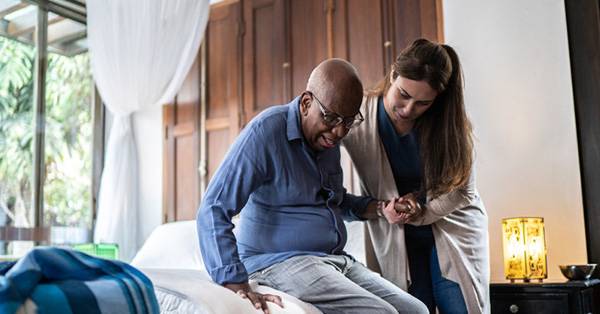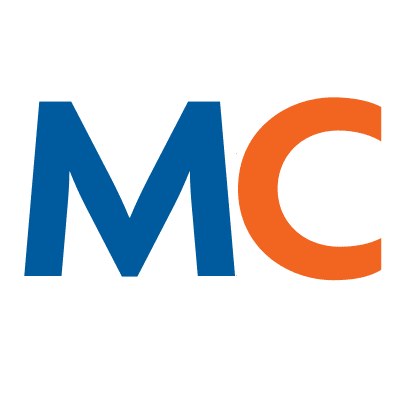- Solutions
- Solutions
- Home Health
- Hospice
- Life Plan Community
- Palliative Care
- Private Duty
- Senior Living
- Skilled Nursing
- Skilled Nursing
- Skilled Nursing Software
- Advanced Insights
- Customer relationship management
- Data and analytics
- Financial & operations management
- Marketing
- Nutrition management
- Referral management
- Regulatory compliance
- Retail management
- Resident engagement
- Revenue cycle management
- Skilled nursing interoperability
- Partners
- Blogs
- Resources
- About
- User Conference

5 Ways to improve staff satisfaction and retention
While EHR technology has evolved to give patients and caregivers more of a consumer experience, it’s also time to give clinical staff the digital tools they need to do their jobs more efficiently and to bring more joy into the important work they do. Post-acute providers that choose a more progressive EHR will find that it not only boosts productivity, but also increases staff retention.
Here are five ways your EHR can help improve staff satisfaction and reduce turnover:
1. Make technology easy to use. While many EHRs require the use of laptops or phones to document care, choosing technology that simplifies clinicians’ everyday jobs will not only increase productivity, but will also boost satisfaction. The large nature of laptops can be difficult to handle from home to home, they take time to reboot, and battery issues are common. Phones, while often sounding ideal to organizations, lead to frustration due to documenting on a small screen. Both options also create barriers between clinicians and those they serve, with patients potentially feeling like more attention is focused on technology versus their care.
With a tablet, clinicians can easily move from home to home and document at the bedside. Built-in logic provides skip patterns that eliminate unnecessary documentation and reduce redundant charting—ultimately allowing for more focus on the patient and less time staring at a screen. The ability to also document at the point of care without connectivity gives clinicians a reliable EHR that can show them patient history even while disconnected.
2. Make compliance easily achievable. Compliance is important for many reasons—one of which is that reimbursement gets delayed for incomplete or incorrect documentation. That’s a big deal for organizations trying to grow their businesses and retain more clinicians. To avoid this, your EHR technology should provide guidance for staff such as the inability to submit HIS or OASIS assessments to CMS if required fields are not filled correctly or left blank.
EHR technology built for compliance also leaves room for critical thinking among staff who are otherwise trained to jump through the same hoops with each patient. When clinicians have the freedom to document uniquely for each care journey—while also being guided toward compliance—they’ll find more satisfaction in their roles.
3. Make staff feel supported. When clinical staff are onboarded, go beyond the basic training for technology and patient care. By creating a community around your clinicians, they will feel supported and truly love what they do. Throw an office potluck for new hires to meet the team and assign them mentors so they have guidance in their new role.
Tracking productivity and late paperwork allows employers to identify staff who are having challenges, investigate why, and offer extra support and training to eliminate issues before they cause frustration to the point of quitting. To help ensure they have a positive working experience, make sure staff have reliable methods to communicate with other staff, patients, and partners, provide 24/7 access to on-demand training materials, and create a community for staff to engage with other users of the product.
4. Make work-life balance a reality. While many clinicians initially think documenting at the bedside will be burdensome, the opposite is true. When EHRs are capable of capturing documentation during the home visit via tablet, it involves the patient, improves accuracy, and cuts down documentation time in the evening.
Additionally, integrations like MatrixCare Link allow clinicians to engage patients and caregivers between visits. Secure messaging capabilities, video chat, and electronic forms give staff the ability to address concerns before they become serious problems—cutting down on after-hours communication.
5. Make a progressive EHR choice. Choosing a progressive EHR should prioritize direct secure messaging with CCDAs and eReferrals that collect patient data and auto-populate demographics, medications, etc. This helps staff save time, gather more reliable information, and exchange patient records—ultimately eliminating the black hole of post-acute care, where referral sources lose visibility of their patient and clinicians lack information about past providers.
Connection to nationwide networks and frameworks such as CommonWell or Carequality give organizations the interoperability they need to avoid these black holes of care. Integrations with partners for pharmacy medications, ePrescribe, speech-to-text, remote patient monitoring, messaging, and more can also improve rehospitalization rates.
With staff satisfaction comes staff retention, so it’s time to break the nationwide clinician shortage with innovative technology that makes jobs easier and more enjoyable. Schedule a demo to see how MatrixCare can help your organization prioritize staff happiness and start increasing your retention rates.
Request a demo today for a closer look at MatrixCare.
See what MatrixCare can do for you
MatrixCare
MatrixCare provides an extensive range of software solutions and services purpose-built for out-of-hospital care settings. As the multiyear winner of the Best in KLAS award for Long-Term Care Software and Home Health and Hospice EMR, MatrixCare is trusted by thousands of facility-based and home-based care organizations to improve provider efficiencies and promote a better quality of life for the people they serve. As an industry leader in interoperability, MatrixCare helps providers connect and collaborate across the care continuum to optimize outcomes and successfully manage risk in out-of-hospital care delivery.
MatrixCare is a wholly-owned subsidiary of ResMed (NYSE: RMD, ASX: RMD). To learn more, visit matrixcare.com and follow @MatrixCare on X
Related Posts



See MatrixCare in action
Start by having a call with one of our experts to see our platform in action.
MatrixCare offers industry-leading software solutions. Thousands of facility-based and home-based care organizations trust us to help them improve efficiency and provide exceptional care.
© 2025 MatrixCare is a registered trademark of MatrixCare. All rights reserved.





